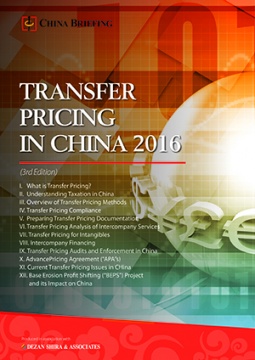China’s Annual Audit and Compliance Requirements
 By Dezan Shira & Associates
By Dezan Shira & Associates
Editor: Steven Elsinga
According to PRC Company Law and other relevant regulations, all Foreign Invested Enterprises (FIEs) in China, including Wholly Foreign Owned Enterprises (WFOEs), Joint Ventures (JVs), Foreign Invested Commercial Companies (FICEs), and Representative Offices (ROs), are required to comply with the statutory annual audit and other compliance processes.
What are the key areas in an annual audit?
For JVs, WFOEs and FICEs, accounts related to purchases and sales are usually the most vulnerable areas in an annual audit, and so more time would typically be spent reviewing these accounts and ensuring that the accounting data is genuine and accurate. This is done by comparing the transactions with the corresponding contracts, invoices, orders, and inventory changes.
In addition, it is quite common for FIEs new to China to conduct most of their transactions with affiliated companies overseas. For example, they would import from their foreign parent company and either sell the products domestically, or export products purchased from China to their overseas affiliates. These transactions can raise issues in transfer pricing and bring the foreign company into non-compliance with the Chinese tax bureau.
For ROs, because daily business operations are relatively simple compared to other types of FIEs, more attention will be paid on expense accounts and financial statements.
Why is the annual audit important to FIEs in China?
FIEs can only distribute and repatriate their profits or dividends back to their home country after completion of their annual statutory audits and settlement of all relevant tax liabilities. Failure to comply with the annual audit and compliance may result in extra expenses, penalties, or even revocation of business licenses.
When FIEs initially began setting up in China, many were not familiar with Chinese accounting standards and tax rules. This resulted in incorrect accounting treatments or tax filings becoming common, especially amongst small and medium-sized FIEs. The annual audit is a good opportunity to enhance a company’s internal control systems. Through the annual audit process, auditors will help find mistakes in business operations, help FIEs improve their financial reports in accordance with Chinese accounting standards, and ensure that accounting data is presented appropriately.
New and revised corporate accounting standards in 2014
FIEs’ financial statements are governed by China’s Generally Accepted Accounting Principles (GAAP), which is based on two standards: the Accounting Standards for Business Enterprises (ASBEs) and Accounting Standards for Small Business Enterprises (ASSBEs). For most enterprises established in China, ASBEs are generally adopted, which are similar in structure to the Generally Accepted Accounting Principles of the United States (U.S. GAAP) and International Financial Reporting Standards (IFRS).
A number of updates to China’s accounting standards [CAS] were released in 2014. The following are the most recent amendments to the standards.
 RELATED: Tax and Compliance Services from Dezan Shira & Associates
RELATED: Tax and Compliance Services from Dezan Shira & Associates
Corporate Accounting Standard [no. 2] – Long-term Equity Investments
This standard now doesn’t apply to equity investments as defined in the standard on financial instruments. One of the major changes is that the financial statement no longer needs to show what proportion of shares the investor holds in its participation or subsidiary. This will instead be entered under capital reserves – a departure from international practices.
The new rules change the calculation method for transactions between related or jointly managed companies. The norms for disclosure of information on subsidiaries, related or jointly managed companies have been moved under Corporate Accounting Standard 41.
Corporate Accounting Standard [no. 9] – Employee Remuneration
This new standard clarifies that payments for short-term work are included and expands the definition for it. The amendment now also adds the benefits received after the termination of the employment contract.
Corporate Accounting Standard [no. 33] – Consolidated Financial Statements
The amendment introduced a new definition of the term ‘control’. Control was previously defined as the investor having the power to determine financial and operational policy and obtaining a benefit from the investee’s business activities.
Now, control means that the investor has the ability to participate in the investee’s operations to earn a variable return, and has the influence to affect the amount in the returns it receives. The investee’s activities need to be related to the return that the investor receives. The ability to participate can take the form of equity shares or derivatives thereof; the right to appoint or dismiss directors; and to make corporate decisions. These criteria allow for a more objective assessment, and take into consideration the way that the investor set up and designed the participation.
Corporate Accounting Standard [no. 39] – Fair Value Measurement
A new set of rules for the determination of fair value was also released in 2014. They apply, among other entries, to inventory, share-based payments, leases, asset impairment and employee remuneration.
Corporate Accounting Standard [no. 40] – Joint Arrangements
A joint arrangement is one where two or more participants jointly control an enterprise. Neither party may by itself control the enterprise.
There can be two types: a joint venture company (合营企业) and joint operation (共同经营).
A joint arrangement is classified as a joint venture company when a separate legal entity is created. Where the participants share in the assets and liabilities of the joint arrangement, such as in a partnership, it is termed a joint operation.
 This article is an excerpt from the November issue of China Briefing Magazine, titled “Annual Audit and Compliance in China 2016.” In this issue of China Briefing, we provide a comprehensive analysis of the various annual compliance procedures that foreign invested enterprises in China will have to follow, including wholly-foreign owned enterprises, joint ventures, foreign-invested commercial enterprises, and representative offices. We include a step-by-step guide to these procedures, list out the annual compliance timeline, detail the latest changes to China’s standards, and finally explain why China’s audit should be started as early as possible. This article is an excerpt from the November issue of China Briefing Magazine, titled “Annual Audit and Compliance in China 2016.” In this issue of China Briefing, we provide a comprehensive analysis of the various annual compliance procedures that foreign invested enterprises in China will have to follow, including wholly-foreign owned enterprises, joint ventures, foreign-invested commercial enterprises, and representative offices. We include a step-by-step guide to these procedures, list out the annual compliance timeline, detail the latest changes to China’s standards, and finally explain why China’s audit should be started as early as possible. |
![]()
 Transfer Pricing in China 2016
Transfer Pricing in China 2016
Transfer Pricing in China 2016, written by Sowmya Varadharajan in collaboration with Dezan Shira & Associates and Asia Briefing, explains how transfer pricing functions in China. It examines the various transfer pricing methods that are available to foreign companies operating in the country, highlights key compliance issues, and details transfer pricing problems that arise from intercompany services, intercompany royalties and intercompany financing.
Managing Your Accounting and Bookkeeping in China
In this issue of China Briefing, we discuss the difference between the International Financial Reporting Standards, and the accounting standards mandated by China’s Ministry of Finance. We also pay special attention to the role of foreign currency in accounting, both in remitting funds, and conversion. In an interview with Jenny Liao, Dezan Shira & Associates’ Senior Manager of Corporate Accounting Services in Shanghai, we outline some of the pros and cons of outsourcing one’s accounting function.
 Double Taxation Avoidance in China: A Business Intelligence Primer
Double Taxation Avoidance in China: A Business Intelligence Primer
In our twenty-two years of experience in facilitating foreign investment into Asia, Dezan Shira & Associates has witnessed first-hand the development of China’s double taxation avoidance mechanism and established an extensive library of resources for helping foreign investors obtain DTA benefits. In this issue of China Briefing Magazine, we are proud to present the distillation of this knowledge in the form of a business intelligence primer to DTAs in China.
- Previous Article Opportunities for FIEs in China’s High-Tech Sector
- Next Article Taiwans ambitionierte Umweltziele





























